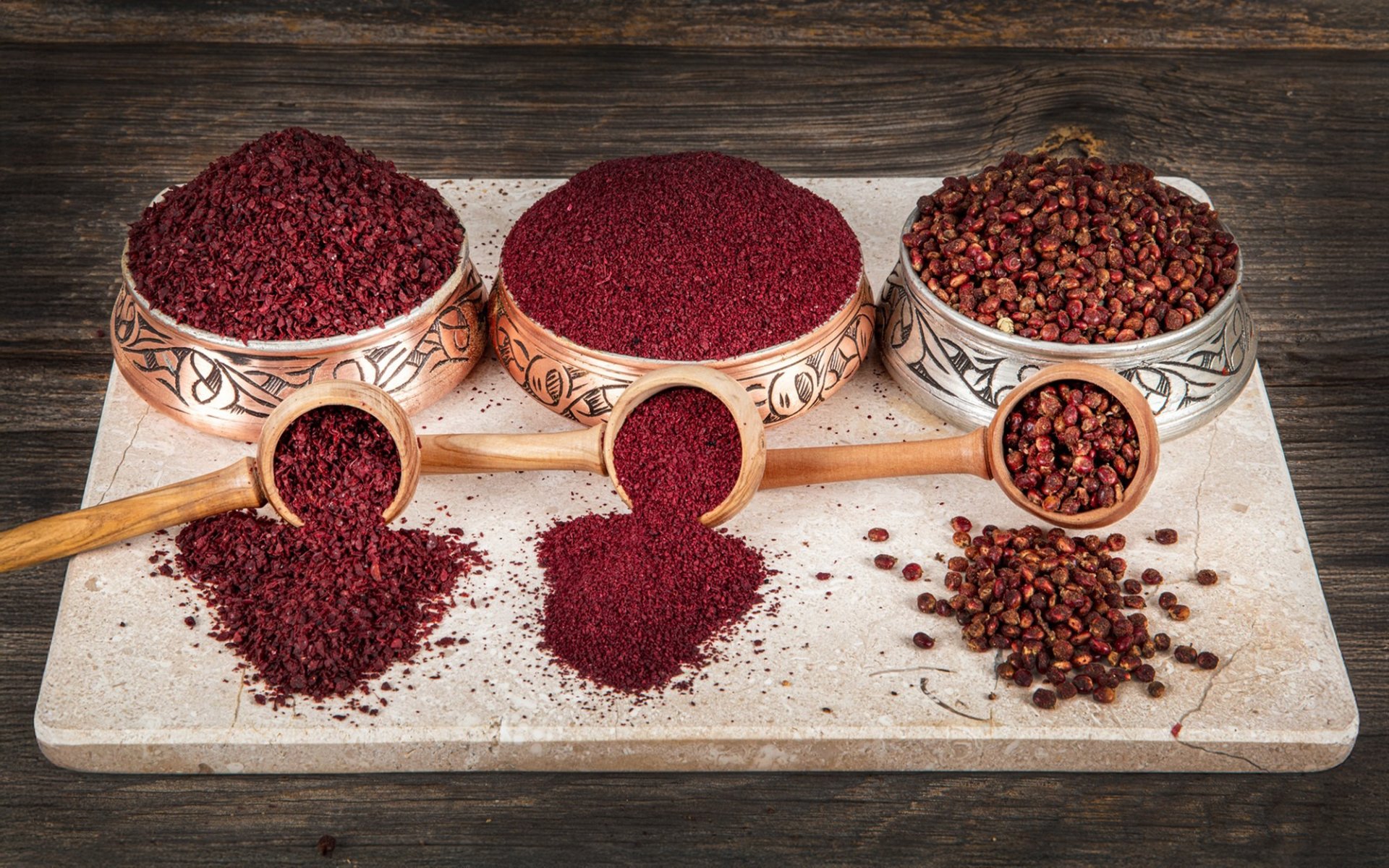Sumac

In the diverse world of spices, there exists a unique botanical marvel known for its distinctive color, refreshing taste, and astonishing health benefits: Sumac. This ancient spice, derived from the dried red berries of plants belonging to the Rhus genus, offers a tart, lemony flavor and a distinct aroma. Sumac is not only widely used to enhance culinary dishes but is also well-regarded for its various medicinal properties and has been a staple in traditional herbal remedies for centuries. This article invites you to explore the fascinating history, remarkable qualities, and versatile applications of Sumac, celebrated as one of the world's most antioxidant-rich spices.
Sumac : The Red Jewel of the Middle East
The word Sumac originates from the Arabic word Summāq, which literally means red, vividly describing the characteristic appearance of this spice. Sumac is harvested from the dried, deep red berries of plants within the Rhus genus, which are native to the Middle East and Western Asiaregions renowned for their rich biodiversity and as the birthplace of many spices and medicinal herbs. This naming based on its color not only reflects its visual appeal but also intrinsically links Sumac to the culture and landscape of its origins.
A Long History : From Ancient Civilizations to Precious Herbal Medicine
Archaeological evidence and historical records indicate that Sumac has been in use since as early as 2,000 BCE by great ancient civilizations including the Greeks, Romans, and Egyptians. In an era before lemons became widely known, Sumac played a crucial role in imparting a tart, tangy flavor to food, making various dishes more complex and appealing. Beyond its culinary uses, Sumac was also employed for other purposes, such as a dye for wool, in tanning leather, and most significantly, as an herbal medicine.
In ancient times, traditional healers discovered that Sumac possessed diverse medicinal properties and could be used to treat a variety of ailments, including:
- Digestive issues: It helped alleviate diarrhea, bloating, and other digestive problems.
- Fever and cold remedies: Possessed properties to reduce fever and relieve cold symptoms.
- Anti-inflammatory effects: Compounds in Sumac exhibited anti-inflammatory actions in the body.
- Antioxidant properties: A highly significant quality that is widely recognized today.
- Antiseptic: Showed efficacy in combating certain bacteria and pathogens.
Hippocrates, the renowned Greek "Father of Medicine," documented Sumac's medicinal attributes in his writings. This serves as vital historical evidence confirming Sumac's ancient use as a medicinal herb and contributes to our modern understanding of its invaluable properties.
Sumac: A Treasure Trove of Antioxidants and Medicinal Applications
Today, the high concentration of antioxidants found in Sumac is widely recognized in medical and scientific research. These compounds play a crucial role in protecting body cells from damage caused by free radicals, which are implicated in numerous chronic diseases such as cancer, heart disease, and cellular aging. Consequently, Sumac is increasingly used as a key ingredient in various medicinal treatments and dietary supplements to promote health and prevent illness. It is truly a spice that not only enhances flavor but also significantly boosts nutritional value.
Sumac in Middle Eastern Cuisine and Along the Silk Road
In later eras, Sumac became an indispensable and popular spice in Middle Eastern and Mediterranean cuisines. It is frequently used in combination with other spices like thyme, sesame seeds, and salt to season a wide array of dishes. Particularly in Middle Eastern culture, Sumac is often brewed into a traditional herbal tea called Sumacade, believed to possess cooling properties and often consumed to relieve fevers and provide refreshment.
Furthermore, in Middle Eastern culinary traditions, Sumac is considered such a vital seasoning that it is often placed on dining tables alongside salt and pepper. It serves as an alternative to vinegar or lemon, providing a unique tartness and aromatic depth to dishes like salads, grilled meats, and other preparations, allowing diners to season their food to taste.
During the Middle Ages, Sumac became an important commodity along the Silk Road, the ancient trade route connecting East and West. Merchants and explorers introduced Sumac from the Middle East to Europe, Asia, and North Africa, where it quickly gained popularity. It was used to enhance the flavor of diverse dishes, including salads, roasted meats, soups, sauces, and pickling brines for food preservation. Sumac's versatility in use, whether fresh as berries, dried whole, or as a fine powder, made it a highly adaptable spice.
Sumac in the Modern Era: From Ancient Heritage to Fusion Cuisine
Today, Sumac remains a popular spice in Middle Eastern and Mediterranean cuisine and is gaining widespread recognition in other parts of the world. With the increasing popularity of Fusion Food, modern chefs are experimenting with incorporating Sumac into new and creative dishes. This includes its use in cocktails to add a tart note and distinctive aroma, or in desserts where a complex flavor profile is desired. Sumac thus embodies a fascinating blend of ancient cultural heritage and modern culinary innovation.
With its impressive medicinal properties, unique flavor, and rich history, Sumac is a spice that not only adds depth to food but also offers genuine health benefits. Experiencing this remarkable spice promises to be an unforgettable culinary adventure.


